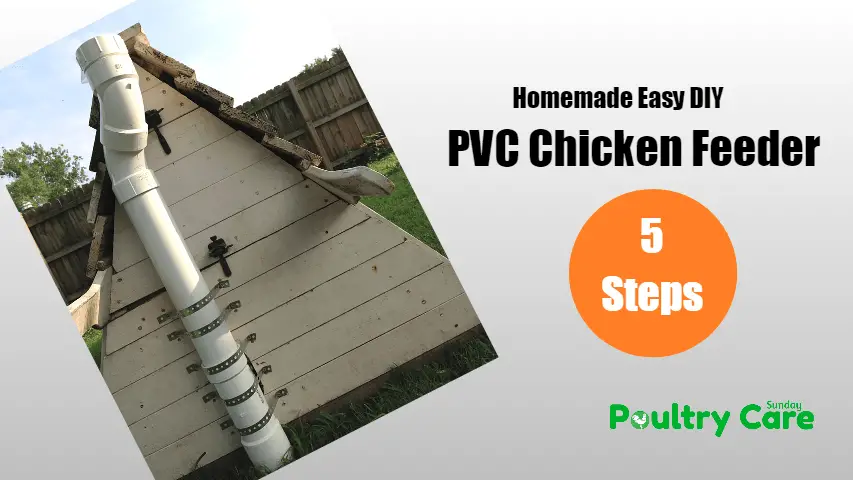Last Updated on April 20, 2022 by Pauline G. Carter
Chickens tend to go around the feeder which creates crop circles in our grass each time we place the coop in another location. It also wastes the feed that becomes attached to every crop circle and flies just love to hover over it.
While the chickens do free-range, it can invite wild birds which can bring diseases as well as parasites to your hens. So if you want to try something cheap and simple that will lessen waste and the vulnerability to wild birds, the solution is a PVC chicken feeder.
Related Article – 10 DIY Chicken Feeder And Waterer Plans And Ideas
Here are the things you will need to build an ideal PVC chicken feeder for your coop:
Other materials (optional):
How To Make Pvc Chicken Feeders Homemade DIY?
Step 1: Assembling the PVC chicken feeder base
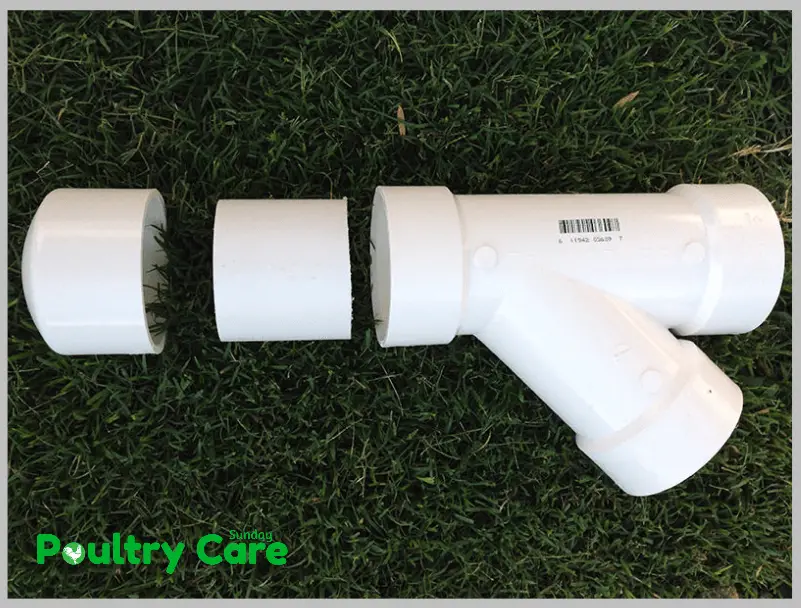
To start your PVC chicken feeder, you will first need some PVC pipe section so that you can attach the PVC cap at the bottom of your Wye connector. Measure the cap’s depth as well as the Wye connector’s inside and then add those measurements together. Then with the use of a hacksaw, cut a piece of the pipe and fit them together using a rubber mallet.
Related Article – 69 DIY Chicken Coop Plans and Ideas – Easy to Build (100% Free)
Step 2: Attaching the remaining length of the PVC pipe
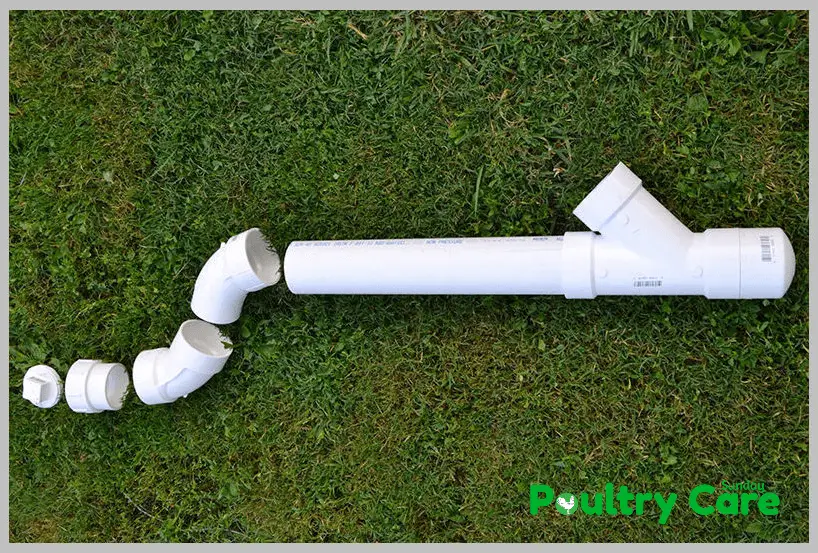
Fit one end of your PVC pipe at top of your Wye connector. In order to determine the perfect height for your PVC chicken feeder, stand and measure it up. Cut the pipe to your desired length. The height will also depend on the height of your coop.
Step 3: Adding the clean-out plug and female adapter
There are many versions for this chicken feeder PVC, if what you want is for it to remain vertical, you can put an additional female adapter and clean out the plug during this step.
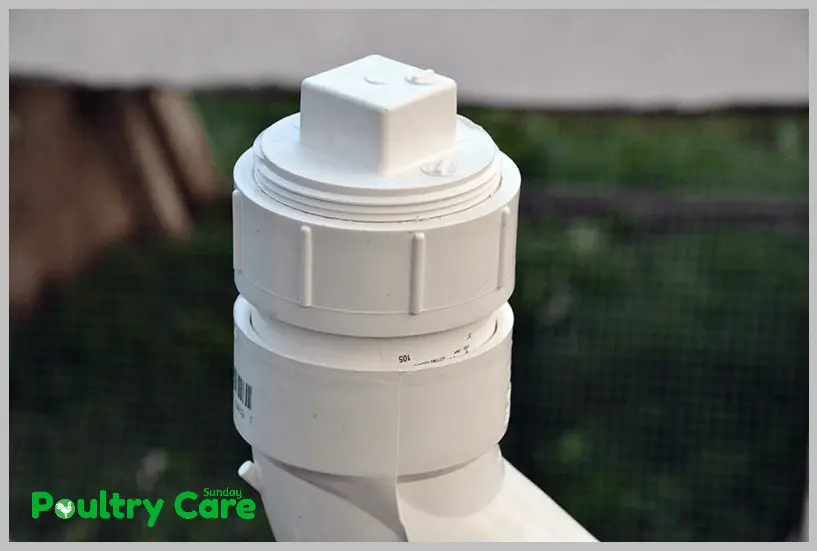
In this version, you need to snake the chicken feeder’s top around the roof of your coop and sidewall in order to reach the desired height, and you can use an elbow PVC to achieve that. And once it is in place you can add the plug and adapter.
Step 4: Determining where the feeder will go
Chicken feeders of this type can be mounted on the wall of your coop or to a post in the run you can attach it outside the coop in order to make it easier to fill, however, you need to drill a hole in one of the doors so that your chickens can have access to their feed on the inside of your run.
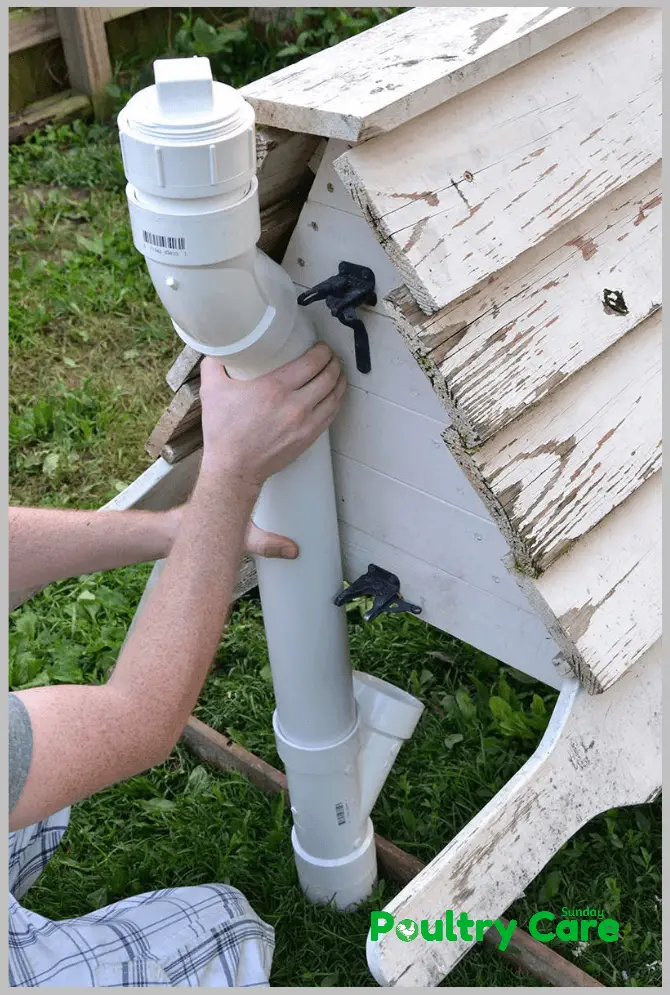
When you have decided where the hole should be placed, reinforce the door by reusing some old 2 x 2-inch furring strips on each side. Then cut a hole so the opening of the Wye connector can fit inside the door. Secure the chicken feeder into place with the use of screws and galvanized pipe hanger.
Step 5: Testing your PVC chicken feeder
If you’re still worried that the feed will still be compacted at the bottom of your feeder, you can pour oyster shell grit just under the level where your chickens will eat their feed. Fill your feeder with a normal crumble. A 2 and a half-pipe can hold more than half of what a traditional chicken feeder can hold.
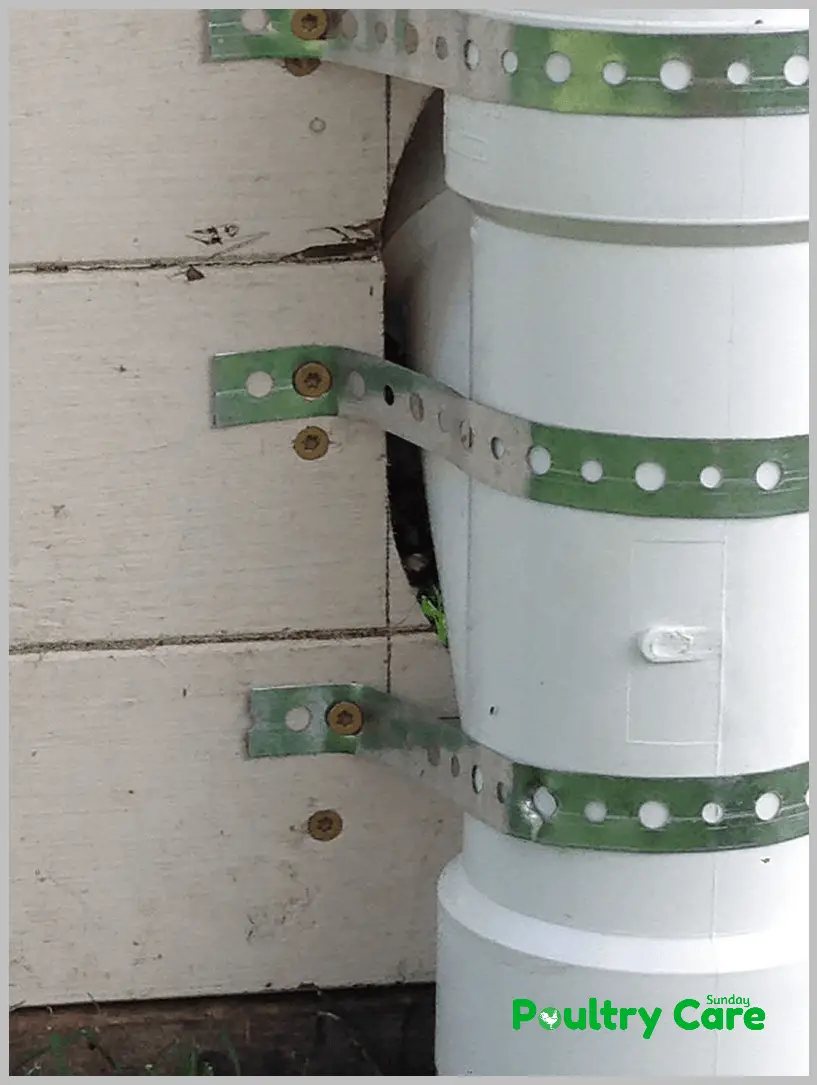
It may not be perfect but one of the advantages of chicken feeders like this is how simple it is. PVC chicken feeders tend to be prone to compression inside. But you won’t have to worry about any mould or fermenting feed that smells.
If however you will find any signs of mould or feed fermenting, simply empty the chicken feeder, clean it using vinegar and air dry. You can also clean the feeder every month even if there are no signs of mould.
In addition, you can put a vent cap at the top of your feeder in order to let the airflow through it and allow the evaporation of moisture while giving its inside protection from the rain. Keep in mind that changes in the season may have an effect on the success of PVC chicken feeders.

Your chickens will surely love this type of feeder and in no time you will see it paying for itself as it will lessen the amount of chicken feed that would otherwise spoil or lose to roaming wild birds. One feeder of this type can accommodate up to 8 chickens.
If you have a larger flock or coop, consider creating at least a couple of PVC pipe chicken feeders in order to accommodate all your hungry chickens.
Is PVC Good For The Chicken Feeder?
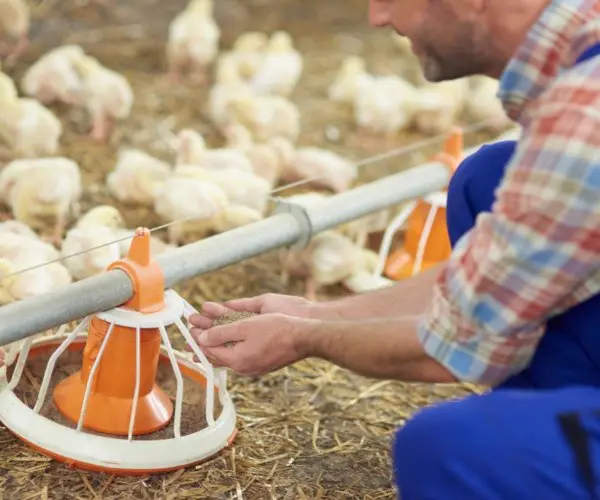
Yes, PVC is a good material for chicken feeders because it is durable and easy to clean. It is also less likely to attract pests. PVC chicken feeders can be easily moved around, which is convenient if you need to change the location of your chicken coop. They are generally less expensive than other types of chicken feeders.
Benefits Of Using a PVC Chicken Feeder
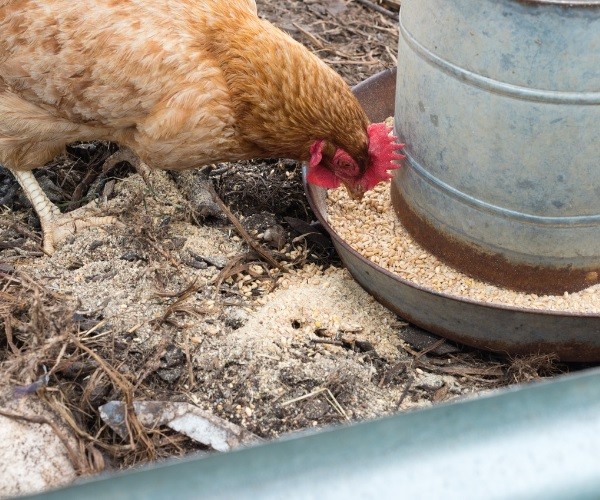
- PVC chicken feeders are very durable and can last for many years.
- They are easy to clean and disinfect, which is important for preventing the spread of disease.
- PVC chicken feeders are also less likely to attract pests, such as rodents or insects.
- PVC chicken feeders can be easily moved around, which is convenient if you need to change the location of your chicken coop.
- They are generally less expensive than other types of chicken feeders.
Conclusion
PVC chicken feeders have many benefits, including being durable, easy to clean, and less expensive than other chicken feeders. They are also convenient to move around if you need to change the location of your chicken coop. Overall, PVC is a good material for chicken feeders.

